These Chinese Beauty Retailers are Giving Sephora a Run for Its Money
by Ker Zheng & Queenie Yao
Over the last few years, China has seen a slew of new consumer retail start-ups emerge.
Driven by a boom in consumer-focused venture capital and private equity, these local players target customers that are looking for cost-effective, yet high-quality items.
This mid-market segment historically has been difficult to crack, with only the likes of Uniqlo, H&M, and Zara able to succeed.
But as China's middle class continues to grow and become more sophisticated, many are realizing that they don't need to pay sky-high prices for imported Western brands to satisfy their needs.
This week, we'd like to turn our attention to two new multi-brand beauty retailers that have emerged in this segment: The Colorist and Wow Colour. Both have been around for less than two years and already have a substantial presence in China's major cities.
We take a deeper look at what they're doing and why they could give Sephora a run for its money.
The Colorist Targets Chinese Customers in the Low- to Mid-End Segment
The Colorist, run by KK Group (Guangdong Kuaike E-Commerce), opened its first store in October 2019, positioning itself as a go-to spot for both affordable and upscale beauty products.
Its stores sell over 6,000 SKUs across seven different categories, including over 70 makeup brands from China, Japan, Korea, Thailand, Europe, and the US. As of August 2020, The Colorist operates over 60 stores across China's Tier 1 and 2 cities.
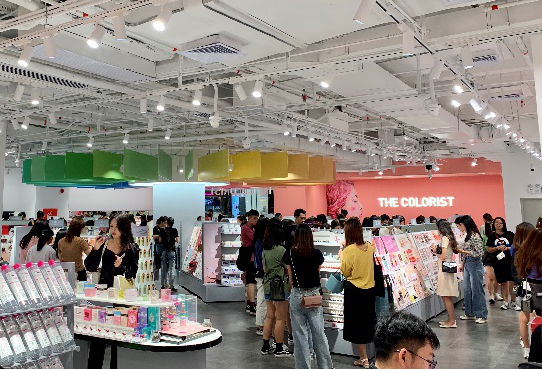
Local Chinese brands such as Judydoll, Little Ordin, etc. constitute 35% of store inventory; these brands are priced at 100-200 RMB/unit and are geared towards females aged 14-25.
As for imported Western brands, The Colorist offers major brands such as La Mer, Estee Lauder, Kiehls, YSL, and NARS Cosmetics - but at prices 10% lower than what Sephora sells them at.
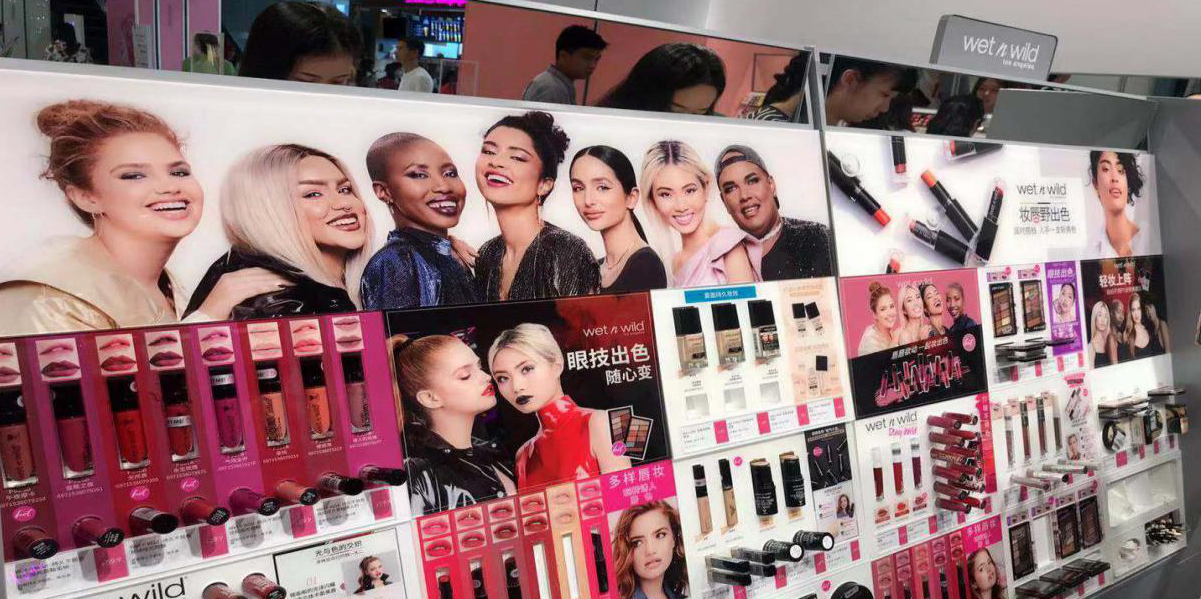
Wet N Wild in The Colorist
Lower-end foreign brands such as Thailand's makeup brand Mistine, US brand Wet n Wild, Korean brand Unny, Canmake from Japan are also available, popular amongst younger customers.
Aesthetics are Geared Towards Younger Customers
Stores run by The Colorist are designed with bright colors, such as pink, orange, light purple, etc., giving them a more youthful feel that appeals to younger millennial customers. This is in contrast to Sephora stores, which tend to be covered in black, white, and dark maroon colors and give off a more mysterious luxury look.
It's not uncommon for The Colorist customers to take selfies of themselves at the store and post on social media plaforms.
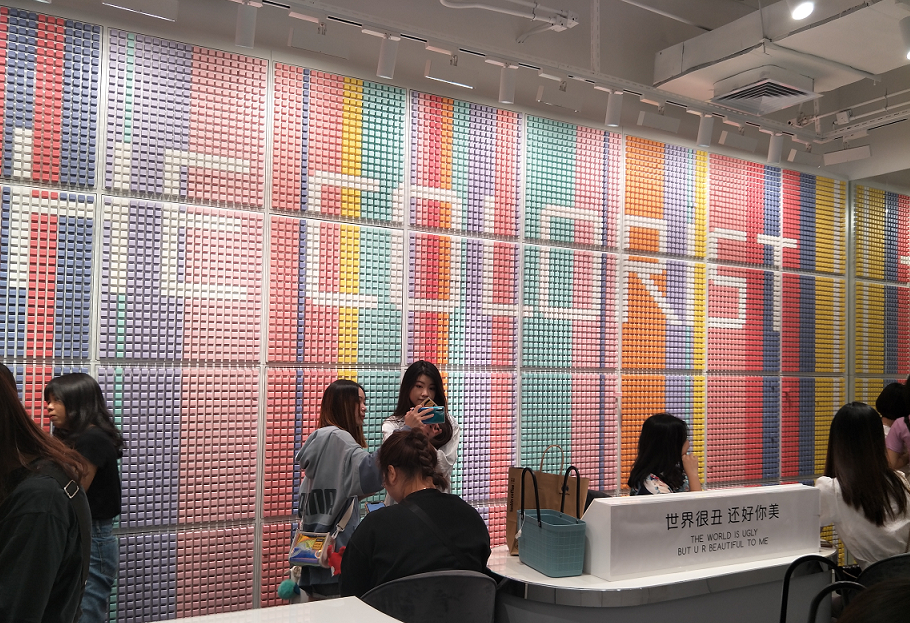
Young customers take photos in front of Lipstick Wall
In October 2019, KK Group announced that it had completed a $100 million round of Series D financing, which it plans to use for store expansion and strengthening of supply chain operations, as well as development of omnichannel e-commerce capabilities.
Download Our Singles Day Guide Singles Day is just a few months away and brands are already getting ready for the big day, which is widely considered to be the most important retail event of the year. Our downloadable guide details what you need to do to prepare your retail business for a successful Singles Day. |
Wow Colour: From 0 to 1,000 Stores in Two Years
Wow Colour is a new cosmetics retail chain that was founded in January of 2020 under the umbrella of Miniso, a low-cost variety store retail chain in Guangzhou that mimics aesthetics and styles from Uniqlo and Muji.
Wow Colour's first store opening generated RMB 216,000 on its opening day, an impressive figure for a newcomer to the industry. Funded by a 1 billion RMB cash investment from The Seman Group, the chain plans to open a whopping 500 stores by the end of 2020, and another 500 stores in 2021. It then plans to expand its presence to other emerging market countries with growing middle-class consumers.
The retail chain focuses on selling cost-effective, but high-quality Chinese brands, which account for 70% of the products available.Over 130 brands are available, many of which had been previously online-only brands and ventured into offline retail for the first time.
Wow Colour runs two types of stores: flagship concept stores in Tier 1 cities that are over 500 square meters in size and serve to provide different designs, gimmicks, and services, and conventional stores that are around 200 square meters in size.
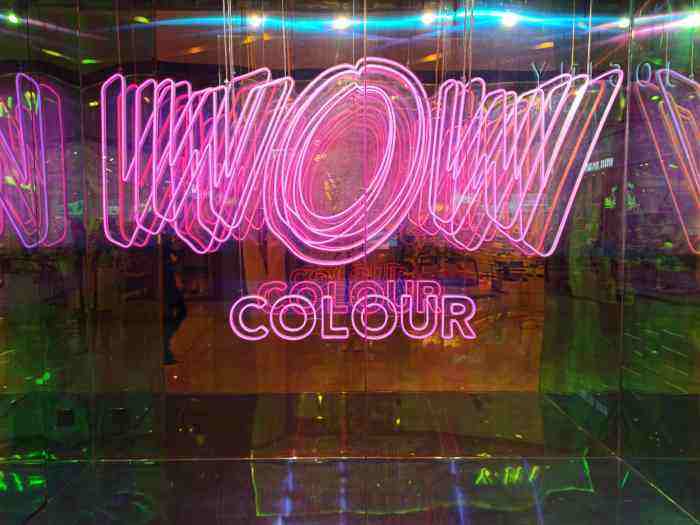
A photo spot in WOW Colour
Instagrammable Photo Sections
Wow Colour has designated areas within its store just for photo-taking; Chinese millennials visit many venues in order to take pictures of themselves and post them on social media platforms such as Little Red Book and WeChat.
For a retailer, customizing stores to accommodate such needs is a way to facilitate viral marketing. This way, it can rely on foot traffic customers to act as evangelists for the brand online. This is important because many customers also do substantial research online on a venue before deciding to go there in person.
Differentiated Merchandising Strategy
Wow Colour also stands out for its willingness to carry online-only local brands. Many of these brands are niche and smaller, and lack the ability to get distributed in larger retail chains and supermarkets.
Wow Colour gives them offline exposure that they normally wouldn't have gotten in the first place, and in exchange it's likely that the retail chain is able to negotiate a larger cut of the proceeds. For many of the brands, Wow Colour possesses exclusive offline retail distribution rights, meaning that customers can't find them in any other cosmetics retailer, pharmacy, or supermarket.
In short, Wow Colour sells brands that can't be found anywhere else.
Within the stores, Wow Colour also displays the top 20 selling items to make it easier for customers to find what they're looking for. There are also areas that give space for customers to try on new products.
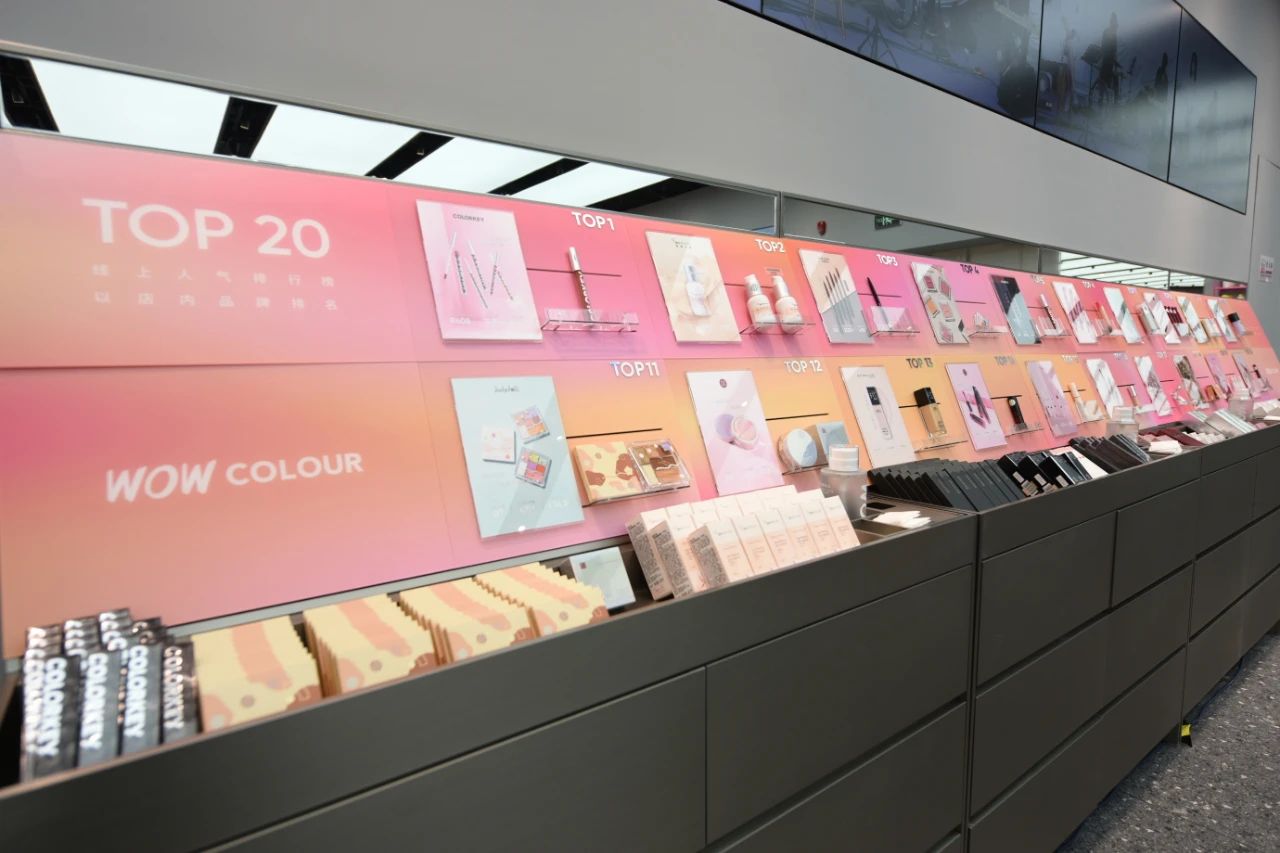
Top 20 product collection
Going forward, Wow Colour plans to offer omnichannel services that enable customers to order products online and pick them up at the nearest offline retail store, ensuring that they can get their hands on products liable to sell out. The chain also plans to offer home delivery services within a certain radius as well.
Key Takeaways
1. China's consumer market is shifting as demand grows for high-quality, yet affordable mid-market products that previously weren't available. Now things are beginning to change as consumer retail VC/PE has grown over the last few years. The Colorist and Wow Colour are two rapidly growing multi-brand cosmetics chains that focus on the mid-market segment.
2. Both of these chains focus on selling Chinese brands that may be popular online but have yet to make their way into offline retail channels. The advantage is that the retail chains can negotiate better deals and profit as the brands grow in popularity, and they can differentiate themselves by carrying exclusive brands.
3. Such retail stores possess characteristics such as pink wallpaper, omnichannel services, and instagrammable store designs to appeal to younger millennials.